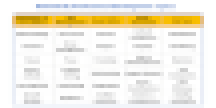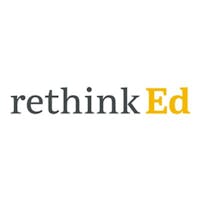It’s no secret that educators who champion the whole-child approach also laud social and emotional learning (SEL) for its scientifically linked success in creating a productive, positive, less stressful school climate.
At Rethink Ed, we know from examining the research that for SEL to have the most transformative effect, it must be embedded into the entire school—all day, every day.
“Scientific studies show that SEL practices improve students’ academic performance, behavior, and attendance,” say Dr. Christina Cipriano, Director of Research at the Yale Center for Emotional Intelligence and Rethink Ed contributor. “These practices help students and their teachers form and sustain better quality relationships, and improve both students’ and teachers’ psychological health and well-being.”
And yet, unprecedented levels of bullying-induced stress are wreaking havoc on students’ mental, physical and behavioral health. The problem has gotten so bad that New York and Virginia recently mandated mental health education in their school curriculums to “enhance student understanding, attitudes, and behavior that promote health, well-being, and human dignity.”
Educators aren’t immune either. A 2017 report by the American Federation of Teachers says teachers are more stressed out more often than the general U.S. workforce, citing hostile work conditions, high-stakes testing, diminished autonomy, and lack of planning time as prevailing reasons.
Not surprisingly, schools rife with anxiety-laden students and stressed-out teachers struggle compared to those marked by quality relationships and positive psychological health and well-being.
So what’s holding educators back from experiencing the very real benefits of SEL, including better academic performance, greater self-efficacy, and higher quality relationships?
For many, it’s a lack of training. A recent national survey found that although four out of five teachers are interested in SEL professional learning, only 55 percent have received it.
At Rethink Ed, we’re closing that gap by introducing a comprehensive, evidence-based, first-of-its-kind SEL solution that promotes mental health, emotional regulation, and prosocial behaviors for all learners—including the adults who teach and support them.
In developing our platform, we sought to better understand the who, what, why, and how of teaching social and emotional learning. We took a holistic approach to the question of how to cultivate the development of social and emotional competencies, and whether successfully integrating and building a culture around SEL into the school really matters.
Here’s what we found:
- SEL is for teachers, too. The best teachers are learners first, then role models for the SEL skills they want to see in their students. Social and emotional learning is most productive when all teachers are invested in the program. With SEL, students not only experience less anxiety, less hyperactivity, and less aggression, they’re generally happier and more attentive, too. The impact on teachers is no less profound. Teachers report that SEL contributes to their own feelings of happiness, and helps them be more organized and responsive.
- Data must drive decision making. Despite a general trend toward data-driven decision making, many schools lack the ability to understand and support the development of SEL skills which emphasize proactive academic, career, and citizenship behaviors. The ability to evaluate relevant outcomes, changes in behavior, fidelity of implementation, and staff buy-in are, in some instances, also lacking. Schools need definitive, quality data to guide SEL programming selection, implementation, and outcomes assessment in order for administrators to monitor staff participation and training outcomes, and for teachers to effectively and efficiently evaluate student participation and progress.
- SEL programming must be flexible. For students to acquire and apply SEL skills, educators must have access to a flexible instructional model that lets them incorporate SEL throughout the school day. For schoolwide SEL to succeed, student-centered lessons and resources must be unique for each tier of learning and include modifications to meet the learning needs of every student, including those requiring Tier 2 and Tier 3 supports.
- Implementation and collaboration supports are a must. Student development of SEL skills greatly improves when school districts and leadership have the necessary tools and resources to facilitate better collaboration between themselves, their students, and the students’ families. When administrators and educators are equally engaged in SEL skill application with the support of family and community, students successfully incorporate SEL practices in (and out) of the classroom.
It’s time to face facts. Truly meaningful experiences for educators and students are possible only if and when SEL moves beyond the theoretical to the practical. And that means embedding SEL throughout the school all day. Not only does it boost academic achievement, it also enhances connectedness, lowers the rate of problem behaviors such as aggression and negative affect, and improves psychosocial functioning in both children and adults.
The wider and deeper the SEL intervention, the more profound the impact on every student, every teacher and every parent.
SEL In Action: Stress Management
Here’s an overview of how Rethink Ed’s SEL platform tackles stress management for all learners using our proprietary methodology, Learn It, Practice It, Dive Deeper. You can also take a tour of this lesson.
With heart pounding, palms sweating and flashes of a failing grade in his mind, 13-year-old Jake is all stressed out because he forgot about his Monday morning science exam with Mr. Bunting. Fortunately for Jake, his principal, Mrs. Bryan, was well ahead of Jake and his stress levels, having assigned her staff the stress management professional development module during last Thursday’s morning meeting.
In less than 10 minutes on Friday, Mr. Bunting learned numerous strategies for managing stress, many of which tracked right along with his lesson plan on the human body. Before the exam, Mr. Bunting leads Jake and his classmates through a stress management technique called, “The Long Exhale.” This 1:2 breathing practice gradually increases the rate of exhalation, which naturally relaxes the body’s nervous system.

In just seconds, Jake feels himself calm down so that he is able to take—and pass—the test.
Later, Jake’s English teacher has his class watch a four-minute video on stress before assigning an in-class essay: “Describe a situation where you felt stress, and then talk about a strategy you used or could have used to manage it.”
Lucky, Jake. He just happens to have a recent experience to share: test-induced stress and the breathing technique that made things better, faster.
Next, Jake heads to media art class for 50 minutes of visual design study. His homework? Create a “Don’t Stress” bumper sticker featuring the one strategy Jake will practice to manage current and future stress. Lucky, Jake. He just happens to have a recent experience to share: test-induced stress and the breathing technique that made things better, faster.
Meanwhile …
- Jake completes a short, self-assessment survey, and is encouraged by his progress.
- Principal Bryan monitors teacher participation and is pleased that Mr. Bunting was on it.
- Mr. Bunting evaluates and tracks Jake’s progress and behavior outcomes, noting that there was no need to give Jake a verbal warning today.
- Jake’s parents log in to the message center and ask a question about an at-home stress management strategy.



